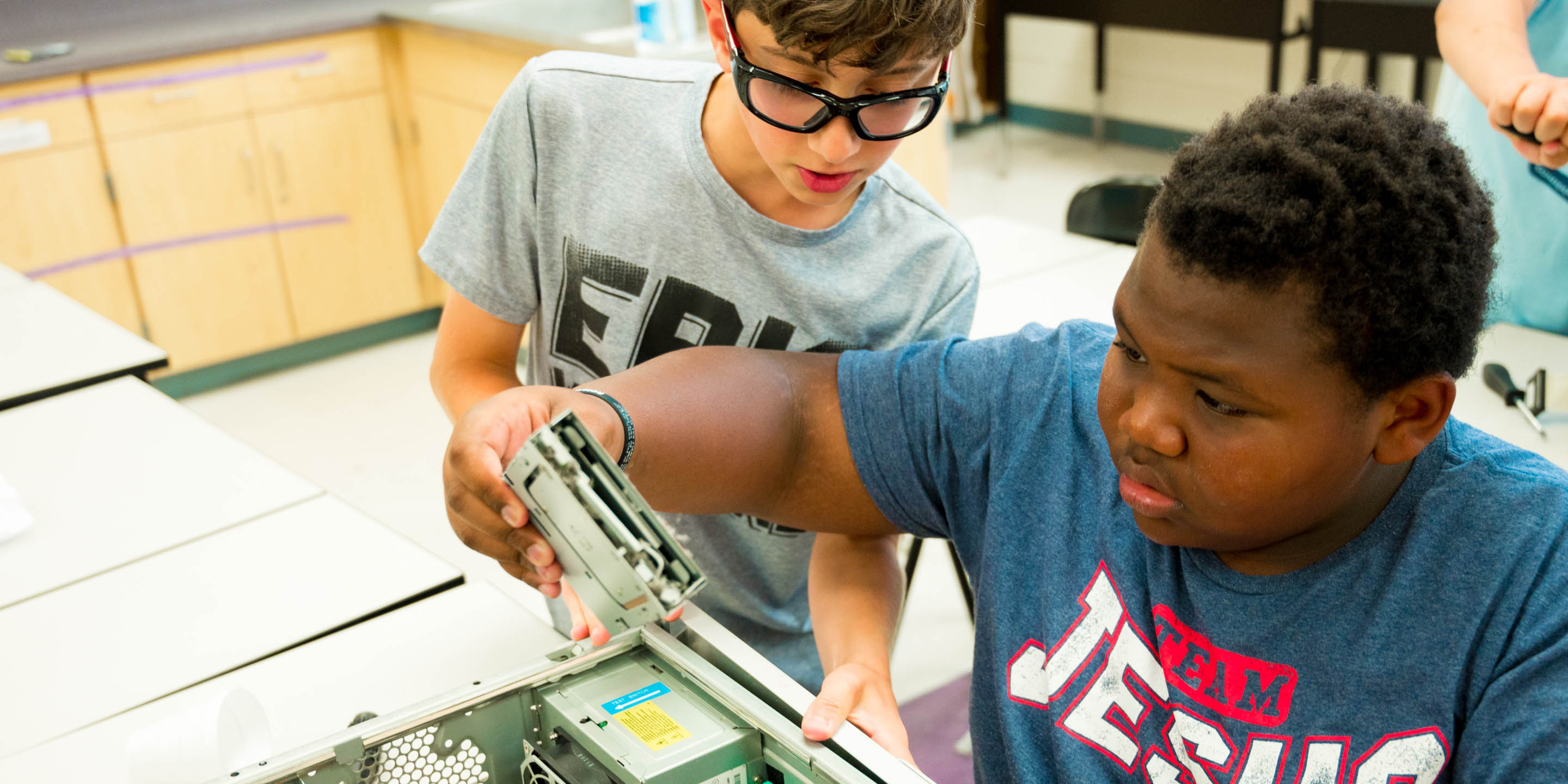

Dual exceptionality, or the recognition that some students bring a variety of strengths and needs to their academic and social game, is not a new concept. I first encountered the terminology as a student in Montgomery County schools. As a student, there were several formative experiences that led to a lifetime of work in the field of dual exceptionality. Little did I know that an elementary school experience would lead to my cameo in an Oscar Award winning movie. That film, “Educating Peter”, was crowned the best short documentary in 1993.
This was the story of a young man with learning difficulties who was one of the first to be included in mainstream education. As a 3rd grade student, he also sat a couple of desks away from me. Peter and my teacher, Mrs. Stallings, provided a learning context about differentiation that helped me to very personally understand and appreciate that whether a child has ADHD, Autism, or as in Peter’s case, Down Syndrome, there were meaningful opportunities to engage using a strength based model.
Characteristics of Twice-Exceptional Students
The Davidson Institute has several good articles on specific characteristics of dual exceptionality, including a couple of case studies with students who are gifted and exhibit characteristics of being twice-exceptional. Keep an eye out for an upcoming blog discussing my work on frustration tolerance and the twice exceptional mind, as presented at the World Gifted Conference.
Interestingly enough, HBO did a sequel called Graduating Peter, and I had the opportunity as a recent college graduate to work with Peter again in a different setting, but that too is a story for another day.
For those wanting to delve deeper into social interaction, cognition and learning modalities, there is an excellent text on the subject with a solid executive summary on the ASCD (Association for Supervision and Curriculum Development).
Strength-Based Approach Inclusion in the Classroom
As a student in Montgomery County, I had numerous opportunities to have inclusion students in my classroom. In high school, I recall I had one young man who had memorized a very specific set of facts and was highly intelligent, but got in his own way when it came to peer-to-peer interactions. Looking back, I can see now that my world geography teacher was using a strength-based approach by structuring her classroom environment so that Chris would have an opportunity to feel validated by sharing his skill set, while also setting appropriate bumper-guards on the conversation and inquiry-based approach so that he didn’t isolate his peers in the process.
“Exceptional” can mean a variety of things. I am exceptionally tall. I tell exceptionally awful puns. I attribute this to an exceptionally tolerant set of parents. I am an exceptionally poor ballerina but an exceptionally good cook. Pursuing and building out skills sets that anchor areas of strength while learning to recognize these strengths in others is the crux of a strength-based approach.
Developing a Strength-Based Approach to Exceptionality
A strength-based approach to exceptionality really means to build on the things that someone is good at, often broken down into broad categories and then using those as a planning and decision making framework for optimization of success. Here is a link where you can explore a scientifically valid strength based survey to help you (or your 2-e child) to identify their individual strengths.
This strength-based approach has had a paradigm shift like impact in a variety of educational settings. Check out what this looks like in a California school system.
Much like an EQ-i categorizes relative areas of strength in emotional intelligence and provides a scientific measurement and recommendations for personal growth, understanding the strengths of the twice-exceptional child is an important part of giving them the tools for longitudinal success.
In Conclusion
For our purposes, a positive outcome means having connected strengths together as tools to scaffold meaningful social successes and social resiliency. These outcomes manifest as academic and later employment successes. In order to meet the needs of the exceptional mind, understanding the neurobiology (or how these kids are wired) is a great first step.
If you’re interested in delving deeper, for those interested in being part of the scientific, into research based understanding in the field of 2e, check out this research study which is now enrolling at the Michaelson Lab at the University of Iowa. For those looking to enroll their child in an ADHD friendly camp focused on helping improve social and life skills, get in touch with us here at Camp Sequoia!
